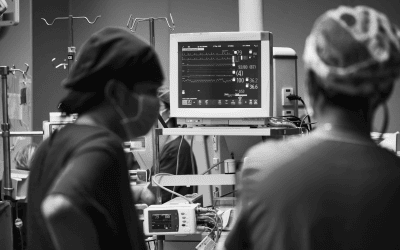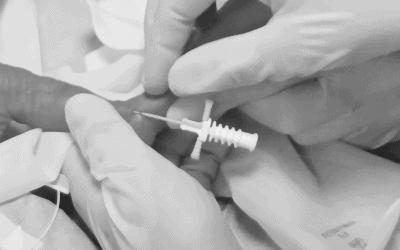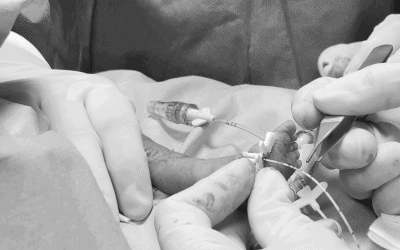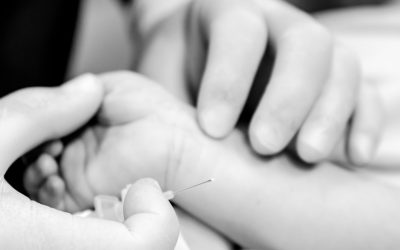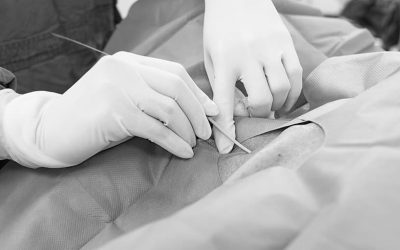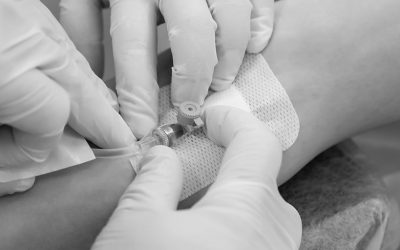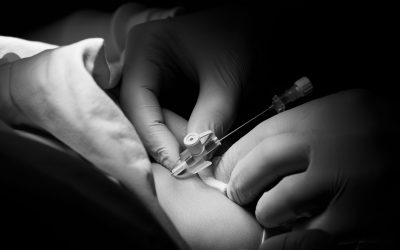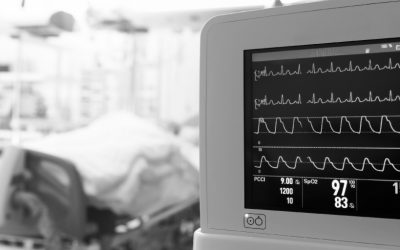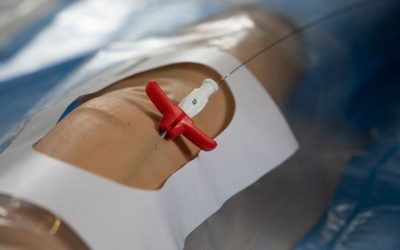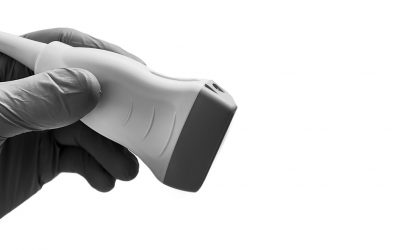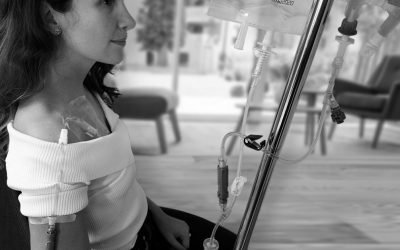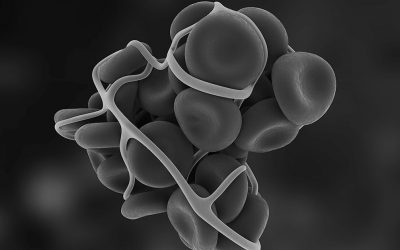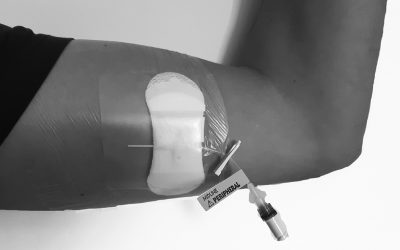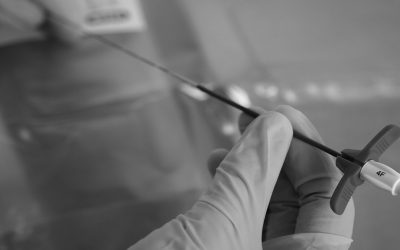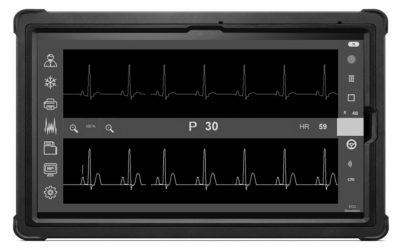When withdrawing a Huber needle from an implantable port, complications such as occlusion can arise. It is one of the leading complications in CVADs, affecting up to 1 in 3 catheters1 and can potentially lead to serious or life-threatening consequences. To mitigate...

Campus Vygon
Cardiovascular innovation in the 21st century: A renewed commitment to life
To mark World Heart Day, we take a look at the most significant innovations in the field of cardiology. From advances in imaging and diagnostic technology to life-saving devices, the heart of medicine is beating stronger than ever. Cardiovascular innovation on World...
Simulation in Hemodynamic Monitoring and Management
Hemodynamic monitoring and management are fundamental components of perioperative care. Accurate measurement and interpretation of advanced hemodynamic variables can guide clinical decisions and therapeutic interventions, ultimately enhancing patient outcomes. To...
Central venous cannulation in 14 steps
Central venous catheter placement has become a routine procedure due to its numerous indications: it facilitates resuscitation, nutritional support and long-term vascular access. Channeling is usually carried out under ultrasound guidance because of the great...
The Benefits of Cardiac Output Monitoring for ICU Nurses
Nurses are the first clinical aid at the bedside, monitoring and responding to changes in patient conditions. Providing nurses with tools to make more informed decisions can significantly enhance patient care as early detection of preventable outcomes is crucial for...
3 benefits in the use of central venous catheters with rifampicin and miconazole
The proportion of patients who have a central venous catheter inserted has increased over the years, so much so that 78% of patients admitted to intensive care units (ICU) in Europe have a CVC inserted.7 However, central venous catheter (CVC) placement has associated...
Cost Analysis of the Modified Seldinger Technique (MST) for neonatal PICC Insertion
Neonatal peripherally inserted central catheters (n-PICCs) are commonly used in neonatal intensive care units to administer vasoactive drugs and hyperosmotic solutions such as parenteral nutrition. These catheters are often maintained in place for 2 to 3 weeks and...
Top Infusion Errors in ICU & How to Prevent Them
Infusion is a common practice across various hospital departments that carries risks for both patients and healthcare practitioners. Since infusion is typically carried out progressively over the duration of a patient’s hospitalization, it often becomes...
What are the risk factors for Necrotising enterocolitis (NEC)?
Definition of NEC Necrotising enterocolitis (NEC) is a serious condition that can occur following preterm birth, characterized by bowel inflammation that prevents milk feeding and may require surgery. It is associated with high mortality rates, exceeding 20%. The...
Difficult intubation of neonatal patients
Neonatal tracheal intubation is a frequently performed but high-risk procedure for the baby in delivery rooms (DR) or in neonatal intensive care units (NICU)1. Despite its common use, it remains a complex procedure, particularly when faced with an unexpectedly...
6 risks associated with fluid overloading and how to avoid them
Fluid therapy is essential in the treatment of critically ill patients. Despite this, inadequate fluid management leads to significant morbidity and mortality. WHAT WILL YOU FIND IN THIS ARTICLE? Fluid overload risksCardiovascular overloadPulmonary oedemaMesenteric...
Enteral nutrition in neonates: choosing a safe and specific system that avoids connection errors
Enteral nutrition is the preferred method for delivering nutrients to patients who are unable to consume them orally. While it is associated with fewer complications compared to other nutritional methods, it is not entirely risk-free. One of the most critical...
The Clinical Relevance of the Modified Seldinger Technique (MST) in Neonatology
Neonatal care often necessitates reliable vascular access for the administration of parenteral nutrition, medications, and other critical therapies. The Modified Seldinger Technique (MST) has emerged as a valuable method for inserting neonatal peripherally inserted...
Ultrasound-guided arterial cannulation in 6 steps
Catheterisation of an arterial line for invasive blood pressure monitoring is a common technique, both in Critical Care Units and in the intra- and postoperative period of patients undergoing cardiac or other major surgery requiring strict blood pressure control or...
What is the ideal length for my central venous catheter?
The incidence of mechanical complications during central venous catheter insertion is 6.2% to 11.8% for subclavian and internal jugular vein approaches, making it a challenge to select the ideal catheter length and avoid risks associated with the technique. 1...
Central venous catheter fixation systems: which is the safest option?
The traditional method of fixing central venous catheters was suturing, and although this is still used today, the high rate of complications is leading more and more professionals to opt for other safer options. What are the alternatives? WHAT WILL YOU FIND IN THIS...
What tools can be used to avoid resonance in the blood pressure waveform?
In 30.7% of cases, the arterial blood pressure waveform is resonant. If this happens, the reading will be incorrect and, if we base our decisions on it, they will not be the most accurate. WHAT WILL YOU FIND IN THIS ARTICLE? What is resonance? How to avoid resonance?...
Which introducer to choose for the insertion of neonatal PICCs?
The challenge of achieving correct catheter placement at the first attempt in neonates and premature infants has led healthcare professionals to prioritise minimising the trauma caused during insertion. Choosing the right catheter and introducer is crucial to reducing...
6 Keys to proper care and maintenance of the CVC
Central venous catheters are one of the most commonly used devices in hospitals, however, they can present some complications, and to avoid them, proper care and maintenance of the device is essential. WHAT WILL YOU FIND IN THIS ARTICLE? Monitoring of the insertion...
10 Keys to safe internal jugular vein CVC placement in pediatrics
According to studies, the success rate of IJV cannulation in infants can be 100% as long as certain measures are taken and catheter insertion is ultrasound-guided. 1 WHAT CAN YOU FIND IN THIS ARTICLE? Pediatric patients: the challenges of central venous cannulation...
Volume response in septic shock. Case study presented by Dr. Sergi Tormo Ferrándiz
Sepsis is defined as a systemic inflammatory response to infection. This scenario is encountered daily in all healthcare centres with a rate of 10 per 1,000 hospitalised patients. This condition is of great importance as mortality is observed in 20% of sepsis...
Fluid therapy: challenges in the septic patient
The administration of fluids is essential for the survival of the critical patient in shock, regardless of the cause of the shock. This supply occurs to a greater extent during the first hours and days of stay, since it is during these that resuscitation of the...
5 key parameters to understand the hemodynamic response of a septic patient
The first definition of sepsis was made in 1980 and was based on the concept of Systemic Inflammatory Response (SIRS). Despite advances and new definitions over the years, it was then that the basis for the management of the septic patient was established. Sepsis is...
Seldinger technique: when to use the classical or modified method
The evolution of the Seldinger technique since its development in the 1950s has allowed this method to be used with other types of vascular access devices and in fields outside of interventional radiology. In fact, initially known for the insertion of arterial and...
Ensuring optimal care for DIVA patients
The VAD (vascular access device) insertion experience varies between patients. For individuals with difficult intravenous access (DIVA), the process can become traumatic and notably painful. According to Blanco (2019), DIVA affects up to one-third of critically ill...
Everything you need to know about tunnelling in midlines
In ultrasound-guided procedures, it is possible that an ideal vein isn't found in the optimal catheter exit zone. When confronted with the decision between "immediate placement of a line out of necessity for the patient" and "waiting for potential alternatives,"...
Ultrasound in the placement of PICCs and midlines
As the GAVeCeLT group (1) stated in their manual on PICCs and midlines regarding the evolution of PICC use, the introduction of ultrasound in the 2000s has been a breakthrough in the field. In this article, we delve into the utility of ultrasound in the field of...
Facilitating cannulation in neonates: Microseldinger technique
Neonatal patients admitted to Intensive Care Units are subjected to continuous manipulations and invasive procedures. One of the main objectives of nursing care is to minimize the practice of aggressive techniques in order to improve care and prevent complications....
3 keys to choosing the best hemodynamic monitor for our patients
Hemodynamic monitoring provides us with information on cardiovascular performance and has therefore become a fundamental tool in the diagnostic approach and therapeutic orientation. More and more devices are becoming available that allow us to carry out advanced...
CSSAS: Closed Safety Systems for Administration to Reduce Risks of Occupational Exposure to HMPs
Healthcare professionals handling chemotherapy for preparation and administration of HMPs are likely to be exposed to potential contamination risks associated with cytotoxic drugs. These risks can lead to health implications, ranging from minor issues like headaches,...
5 things to know about thrombosis in PICCs
In this article, we will address thrombosis in peripherally inserted central catheters (PICCs) based on the following aspects: incidence, causes, physiology, symptomatology, and prevention. What is thrombosis? Thrombosis is the formation of a clot in a vessel. It can...
Recommendations for the management of difficult airways during COVID-19
As some of the commonly recommended strategies for managing difficult airways are not optimal in the context of COVID-19, the Society for Airway Management (SAM) decided to take action. To this end, it has set up a task force to review existing literature and current...
Midline catheter: placement and maintenance protocol
The midline catheter growth has been exponential since it is a resource that allows a notable improvement in the management of vascular access for medium-term treatments compatible with peripheral perfusion. Midline catheters must be placed by trained and specialised...
What are the advantages of PICC-port?
PICC-port is an implanted catheter that is undoubtedly gaining ground in the world of vascular access. Its growing success is not surprising: it comes with new indications, cost reduction and patient satisfaction. Even if PICC-port has been in use for several decades,...
Is the use of cleaning protocols sufficient to increase the safety of ENFit® connectors in neonates?
The introduction of ENFit® connectors in neonatology units, with the aim of avoiding connection errors between systems intended for different clinical therapies, has generated much debate among experts in the field. The new connector for enteral nutrition poses a...
Hypothermia in newborns, how to prevent it?
Approximately 94 million infants are born each year worldwide. All of these infants are vulnerable to cold stress and thus hypothermia, regardless of their gestational age or weight. It is important to provide them with an adequate and stable environment because of...
Which intubation guide to choose for which patient?
Intubation is one of the most common practices for an anaesthetist. However, when this technique is performed, the patient's airways are often not as accessible as we would like. This is why an intubation guide is very often necessary to facilitate intubation into the...
ZIM method and tunnelling in PICC placement
In Intravenous Therapy Teams, PICC placement using standard MST (Modified Seldinger Technique) is common practice and generally well controlled. However, complications can arise if the standard technique is applied, and the insertion site is unsuitable. Failure to...
6 measures to ensure the proper functioning of a PICC-port
Healthcare professionals working with oncology patients are used to handling fully implanted catheters. In recent years, PICC-port has proven to be very useful in the field. However, any vascular access device can become a problem if its placement has not been optimal...
5 key advantages of midlines you should know of
Short Peripheral Intravenous Catheters (SPIVCs) are commonly used as default vascular access devices by practicians around the world for short and midterm therapies. However, they can be a problem in case of medium therapies as that would entail the insertion of...
PICC placement in patients with Atrial Fibrillation
According to the studies by Dr Pittiruti and Dr LaGreca Since the late 1980s, Dr Pittiruti and Dr LaGreca of the Fondazione Policlinico Universitario Agostino Gemelli in Rome have been researching the possibility of using ECG to locate the tip of a PICC. In 1989 (1),...





